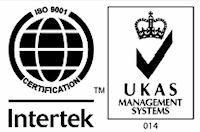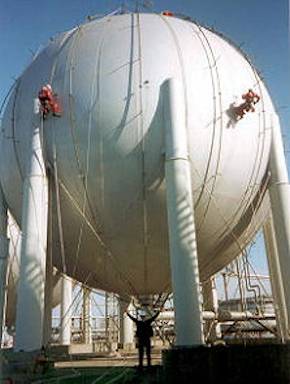NDT Services
Acoustic Emission Testing
MTI offers an Acoustic Emission (AE) testing service for integrity testing of pressure vessels and monitoring floor corrosion in large above ground storage tanks.
Continue reading
Corrosion under Insulation
Corrosion under insulation (CUI) in piping is difficult to find because it is not immediately visible. MTI uses profile radiography in pipework up to 10" diameter to gather an image of the pipe wall without removing the insulation.
Continue reading
FRP Tank Inspections
Inspecting FRP tanks by Acoustic emission Testing (AET) is the only global integrity test which will detect and grade damage in the composite material of FRP tanks.
Continue reading
Guided Wave Testing
Guided wave testing is a form of Ultrasonic Testing that is excellent for corrosion detection in long lengths of pipe, at road crossings and bund penetrations.
Continue reading
Industrial Radiography
Industrial radiography is an effective Non Destructive Testing (NDT) method and a very versatile diagnostic tool for inspecting most materials including castings, welded joints and pipelines.
Continue reading
Liquid Penetrant Inspection
Liquid Penetrant Inspection LPI (also known as Dye Penetrant Inspection DPI) is an effective method for location of surface breaking defects in materials with smooth non-porous surfaces such as stainless steels and other metals not prone to surface oxidation.
Continue reading
Magnetic Particle Inspection
Magnetic Particle Inspection (MPI) is a very effective method for location of surface breaking and slight sub-surface defects such as cracking, pores, cold lap, lack of sidewall fusion in welds etc in magnetic materials.
Continue reading
Phased Array Ultrasonic Testing
Phased Array Ultrasonic Testing (PAUT) is an advanced non-destructive examination technique that utilizes an array of ultrasonic testing probes, each of which is pulsed individually with computer-calculated timing (phasing).
Continue reading
Remote Visual Inspection of Hygienic Tubing
Borescope inspection is defined as an inspection of internal parts such as the root passes of butt welds in pipe, tubing and other normally inaccessible areas. It is used extensively for quality control of automatic autogenous weld joints in hygienic tubing.
Continue reading
Shell & Tube Heat Exchanger Tube Inspections
MTI uses advanced Eddy Current and RFT testing technology that utilizes Russell NDT EasyLogPro software. This makes fault detection easier and more efficient than before.
Continue reading
Storage Tank Inspections
Storage Tank Inspection includes annular ring inspection, eddy current crack detection, ultrasonic bolt testing and corrosion surveys in piping, tanks and vessels.
Continue reading

